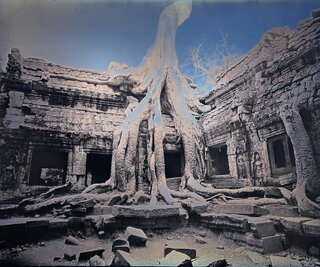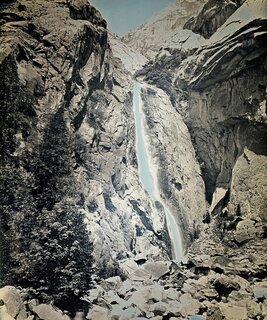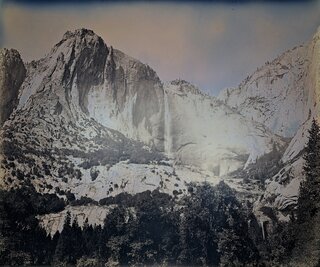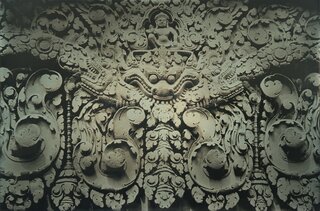
Denver-based art restorer Cynthia Lawrence made the following notes while beginning a recent cleaning process for this painting:
These types of artist boards ("Fav-o-rite") have been popular for painting plein air, as they are light weight and sturdy to transport...In fact, under high-powered magnification, some fine dirt grit appears embedded in the upper paint layers, suggesting Clara indeed painted Red Tree partially or fully out of doors, rather than working in the studio from a drawing, photograph, or memory.
Close examination indicates Clara mostly chose stiff-bristle brushes (note the sharp lines of texture in the brushwork), mostly dabbing, stippling, and applying short strokes of colors pre-mixed from her palette in layers onto the painting. To a lesser degree, she cross hatched brushstrokes, feathered, or modelled them, or dipped her brush into multiple colors and let them marble and blend upon contact with the painting surface, in addition to occasionally scraping or wiping back into some of her paints to reveal underlying colors on the high points of the canvas weave texture.
While the entire painting is executed in an impressionistic style, the compositional details, colors, and brush strokes are generally crisper and more distinct in the foreground (such as in the flowers in the lower right quadrant), gradually employing softer and longer brushstrokes and more blended colors towards the horizon and in the sky, to enhance the effect of receding into space in the landscape. Clara deftly created the blue-pink foliage on the horizon by softly blending colors found in both the sky and the landscape to create an atmospheric quality at the interface of land and air. In the landscape, some of the uppermost dabs of paint are the more saturated colors and the adjacent complimentary colors of blues/lavenders and oranges/yellows, which enliven and provide more depth and contrast in the composition, without the need for use of strong light and dark colors . . . Her signature and date, which appear nearly black and neatly enough applied to be drawn with ink, are actually purple paint, thinned down and carefully applied by a small brush.




